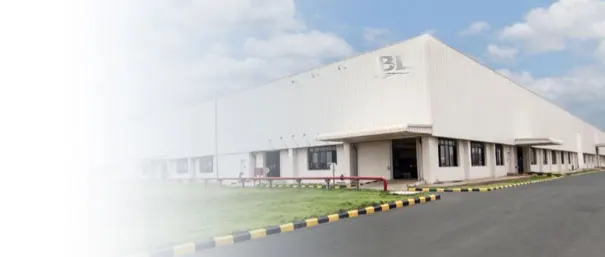ASTM 310S Stainless Steel: High-Temperature Resistant Austenitic Alloy for Oxidizing Environments
ASTM 310S stainless steel (UNS S31008) is a low-carbon, high-chromium-nickel austenitic alloy engineered for superior oxidation resistance at elevated temperatures up to 1150°C (2100°F). With a nominal composition of 25% chromium and 20% nickel, this grade outperforms standard 304/316 in cyclic heating applications while maintaining excellent creep strength and thermal stability. This technical guide covers its metallurgical properties, heat treatment protocols, industrial applications, and comparative advantages over alternative high-temperature alloys.
1. Chemical Composition (ASTM A240/A480 Specifications)
| Element | Content Range | Metallurgical Role |
|---|---|---|
| Carbon (C) | ≤ 0.08% | Minimized to prevent carbide precipitation during welding and high-temperature service |
| Chromium (Cr) | 24.00 – 26.00% | Forms Cr₂O₃ passive layer; critical for oxidation resistance at 1000°C+ temperatures |
| Nickel (Ni) | 19.00 – 22.00% | Stabilizes austenitic microstructure; enhances ductility and thermal shock resistance |
| Manganese (Mn) | ≤ 2.00% | Deoxidizer; improves hot workability during rolling processes |
| Silicon (Si) | ≤ 1.50% | Enhances scale resistance in sulfur-containing atmospheres |
| Phosphorus (P) | ≤ 0.045% | Residual impurity; controlled to maintain high-temperature ductility |
| Sulfur (S) | ≤ 0.030% | Minimized to prevent hot shortness during fabrication |
| Iron (Fe) | Balance | Base matrix element |
2. Mechanical Properties at Elevated Temperatures
| Property | Room Temperature | 600°C (1112°F) | 900°C (1652°F) |
|---|---|---|---|
| Tensile Strength | ≥ 515 MPa | ≥ 310 MPa | ≥ 140 MPa |
| Yield Strength (0.2% offset) | ≥ 205 MPa | ≥ 170 MPa | ≥ 95 MPa |
| Elongation | ≥ 40% | ≥ 30% | ≥ 20% |
| Modulus of Elasticity | 193 GPa | 159 GPa | 125 GPa |
| Creep Rupture Strength (100,000h) | – | 95 MPa | 35 MPa |
3. Thermal and Physical Characteristics
- Melting Range: 1399-1446°C (2550-2635°F)
- Thermal Conductivity (100°C): 14.2 W/m·K (vs 16.2 for 304)
- Coefficient of Thermal Expansion (0-100°C): 15.9 μm/m·K
- Specific Heat Capacity (0-100°C): 500 J/kg·K
- Electrical Resistivity: 0.89 μΩ·m at 20°C
- Magnetic Permeability: ≤1.02 (non-magnetic in annealed condition)
4. Manufacturing and Heat Treatment
- Melting Practice: Electric arc furnace (EAF) followed by argon-oxygen decarburization (AOD) to achieve ultra-low carbon content and precise alloy composition control.
- Hot Working: Perform at 1150-1260°C with rapid water quenching to prevent sigma phase formation. Avoid working below 900°C to prevent cracking.
- Cold Working: Limited to moderate deformations due to high work hardening rate. Intermediate annealing required for complex forming operations.
- Solution Annealing: Heat to 1040-1150°C followed by rapid cooling (water quench or forced air) to dissolve precipitates and restore corrosion resistance.
- Descaling: Pickling in nitric-hydrofluoric acid bath (20-30% HNO₃ + 2-5% HF at 60-80°C) to remove high-temperature oxide scales.
- Surface Finishes: Standard mill finishes include 2B (cold rolled, bright annealed), No.1 (hot rolled, annealed, pickled), and specialized high-temperature oxide finishes for furnace applications.
5. Primary Industrial Applications
Furnace and Kiln Components
Radiant tubes, muffles, retorts, and heat treatment fixtures in continuous annealing lines and ceramic kilns. Resists scaling up to 1100°C in air atmospheres.
Petrochemical Processing
Reformer tubes, pyrolysis coils, and sulfur recovery units in refineries. Withstands carburizing and sulfidation in H₂S-containing environments.
Power Generation
Boiler superheater tubes, gas turbine components, and flue gas desulfurization systems. Maintains structural integrity in cyclic thermal conditions.
Automotive Exhaust Systems
Manifolds, catalytic converter housings, and diesel particulate filters. Resists thermal fatigue from exhaust gas temperatures up to 950°C.
Food Processing Equipment
High-temperature ovens, conveyor belts, and sterilization equipment where both heat resistance and hygiene are critical (FDA compliant).
Cryogenic Applications
LNG storage tanks and transportation systems. Maintains toughness at -196°C despite high chromium content.
6. Comparison with Alternative High-Temperature Alloys
| Alloy | Max Service Temp (Air) | Key Advantages | Limitations |
|---|---|---|---|
| ASTM 310S | 1150°C | Best oxidation resistance in sulfur-free atmospheres; cost-effective for continuous service | Limited strength above 900°C; susceptible to sigma phase embrittlement |
| ASTM 309S | 1050°C | Higher carbon version for improved creep strength; better weldability | Reduced ductility; more prone to intergranular corrosion |
| Incoloy 800H | 1100°C | Superior creep resistance; stabilized with Ti/Al for long-term service | Higher nickel content increases cost; requires solution annealing |
| RA330® | 1150°C | Enhanced carburization resistance; 35% Ni content for thermal stability | Proprietary alloy with higher cost; limited availability |
| Hastelloy X | 1200°C | Exceptional high-temperature strength; resists reducing atmospheres | Premium pricing; complex fabrication requirements |
7. Fabrication and Service Recommendations
- Welding Procedures: Use ER310 or ER310S filler metal with low heat input (≤1.5 kJ/mm). Preheat not required for thin sections; maintain interpass temperature below 150°C. Post-weld annealing recommended for critical applications.
- Machining Considerations: Use carbide tooling with positive rake angles. Reduce speeds by 30% compared to 304 due to higher work hardening rate. Flood cooling essential to prevent tool wear.
- Corrosion Limitations: Avoid prolonged exposure to reducing acids (HCl, H₂SO₄) or chloride salts above 60°C. Not recommended for wet corrosion environments—consider 316L for such applications.
- Thermal Cycling: Design components to accommodate thermal expansion (15.9 μm/m·K). Use expansion joints for long runs of piping or ductwork.
- Quality Certification: Verify material test reports (MTR) confirm compliance with ASTM A240, A276, or A312 standards. Request PMI testing for critical applications to prevent alloy mixing.
8. Request a Technical Quote for ASTM 310S Products
Require customized ASTM 310S stainless steel in sheet, plate, bar, or tubular forms? Our metallurgical experts provide tailored solutions for high-temperature applications with full traceability and test certification. Contact us for competitive pricing on standard and exotic sizes, including:
- Hot rolled plates (3mm-50mm thickness)
- Cold rolled sheets (0.5mm-3mm with 2B/BA finishes)
- Seamless/welded pipes and tubes (OD 6mm-610mm)
- Forged bars and custom profiles
- Precision-cut components with waterjet/laser processing
.content-wrap { font-family: Arial, Helvetica, sans-serif; color: #333; line-height: 1.8; width: 100%; max-width: 1200px; margin: 0 auto; padding: 20px 30px; }
.article-title { font-size: 28px; color: #222; font-weight: 700; margin: 0 0 30px; padding-bottom: 15px; position: relative; border-bottom: 2px solid #eee; }
.article-title::after { content: “”; position: absolute; left: 0; bottom: -2px; width: 120px; height: 2px; background-color: #2c5282; }
.article-intro { font-size: 16px; color: #444; margin: 0 0 40px; text-align: justify; }
.section-title { font-size: 22px; color: #2c5282; font-weight: 600; margin: 50px 0 25px; padding-left: 15px; border-left: 4px solid #2c5282; }
.table-container { width: 100%; overflow-x: auto; margin: 0 0 30px; }
.spec-table, .compare-table { width: 100%; border-collapse: collapse; background-color: #fff; box-shadow: 0 2px 5px rgba(0,0,0,0.05); }
.spec-table th, .spec-table td, .compare-table th, .compare-table td { padding: 12px 15px; border: 1px solid #eee; text-align: left; }
.spec-table th, .compare-table th { background-color: #f8f9fa; color: #2c5282; font-weight: 600; }
.spec-table tr:hover, .compare-table tr:hover { background-color: #fafafa; }
.property-list, .process-list, .precaution-list { padding-left: 20px; margin: 0 0 35px; }
.property-list li, .precaution-list li { margin: 0 0 12px; font-size: 15px; }
.process-list li { margin: 0 0 18px; font-size: 15px; }
.property-list strong, .process-list strong, .precaution-list strong { color: #2c5282; }
.application-grid { display: grid; grid-template-columns: repeat(auto-fit, minmax(280px, 1fr)); gap: 25px; margin: 0 0 40px; }
.application-item { padding: 20px; background-color: #fafafa; border-radius: 6px; border: 1px solid #eee; }
.application-item h3 { font-size: 18px; color: #2c5282; margin: 0 0 12px; font-weight: 600; }
.application-item p { font-size: 14px; color: #555; margin: 0; }
.quote-cta-section { margin: 60px 0 20px; padding: 30px; background-color: #f8fafc; border-radius: 8px; border: 1px solid #e2e8f0; }
.quote-cta-content { max-width: 800px; margin: 0 auto; text-align: center; }
.quote-cta-content p { font-size: 16px; color: #475569; margin: 0 0 30px; line-height: 1.8; }
.quote-cta-btn { display: inline-block; padding: 12px 35px; background-color: #2c5282; color: #fff; font-size: 16px; font-weight: 600; text-decoration: none; border-radius: 4px; transition: background-color 0.3s ease; }
.quote-cta-btn:hover { background-color: #1e3a8a; }


